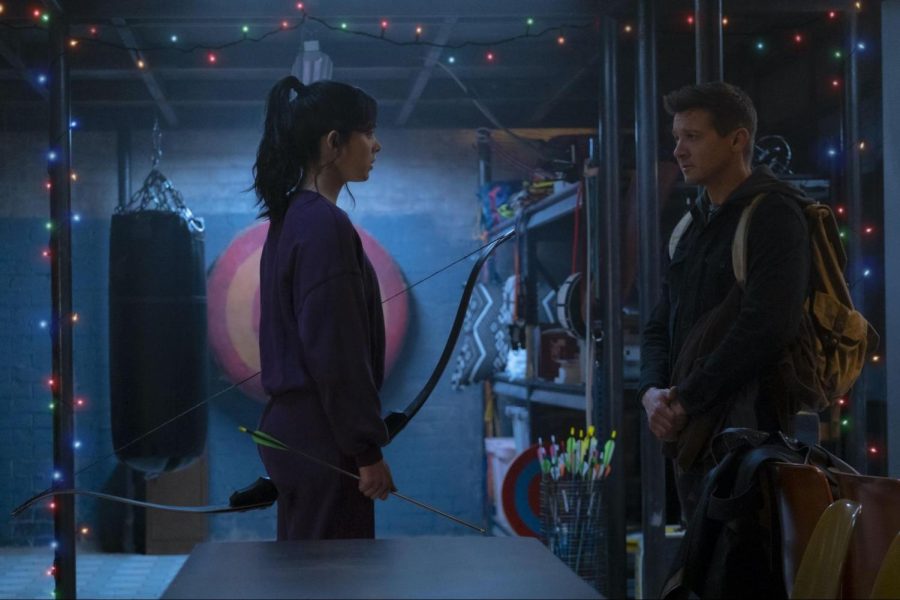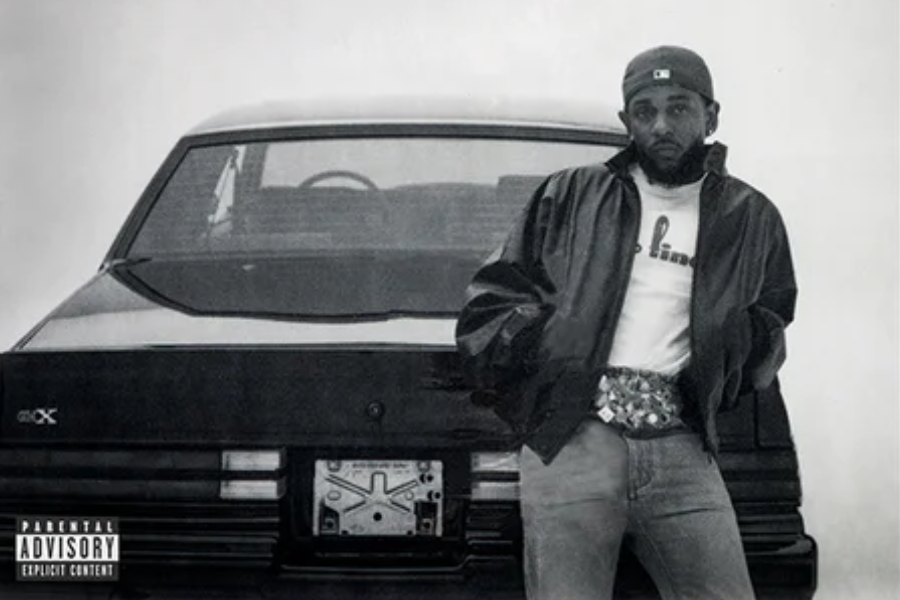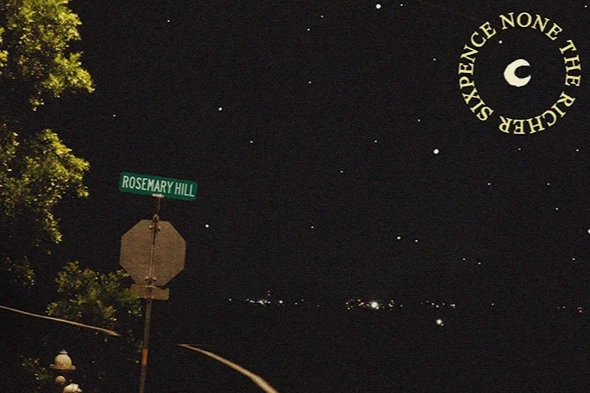“Hawkeye’s” release solidified Marvel’s ability to tackle a successful television show. We’ve reviewed a few of these already, and we loved them, so we had high hopes each time the Disney+ logo appeared on our screens.
“Hawkeye” is most successful in its mission to revamp the titular Clint Barton, who was in several other Marvel movies. In the past, Marvel has often sidelined Barton in favor of the other six original Avengers, including Iron Man, Captain America, the Hulk, Black Widow and Thor. As a result, we were never fans of Barton. Barton was no more than a side character in past Marvel movies, and the producers never truly flesh out his personality. Frankly, he was bland.
Unlike the other members of the original six, Barton lacked the inclusion of his movie in the Marvel Cinematic Universe (MCU). While Iron Man and Captain America both had three films each under their belts, in the movies Barton has been a part of, he had no more than a few lines.
Before the introduction of “Hawkeye” into the MCU, Barton was seriously lacking in personality. Besides his secretive family life and a few quips, we never had a chance to see who he was, and his character seemed more like filler material. However, we can thank “Hawkeye” for making Barton more than just a guy with a bow and a couple of trick arrows.
The series also featured Barton as a hard-of-hearing character. Though Hawkeye was hard-of-hearing in the comics, that characteristic was nonexistent in his on-screen adaptation before the release of this show. Barton himself is unsure of what caused his hearing loss, but the inclusion of Barton as a hard-of-hearing character introduced much-needed representation into the MCU. Barton became an increasingly complex and more comic-accurate version of himself with the addition of his hearing loss.
At its basis, “Hawkeye” follows Barton as he confronts his past while visiting New York with his children. The Sweatsuit Gang, a bumbling yet dangerous group from his past led by the fiercely determined Maya —a Deaf character who confronts Barton about his reliance on hearing technology— resurfaces. Unfortunately, Maya mistakenly believes that he has returned to wreak more havoc on her group and has a score to settle with him. Though Maya was technically a villain within the show, we couldn’t help but feel a soft spot for her. Despite feeling an obligation to stop them, Barton spends the entirety of the series attempting to wrap up his mission as quickly as possible so he can go home and spend the holidays with his family—a noble cause.
This particular storyline resonated with the timeline of Hawkeye’s release and with us. Barton’s dedication to his family was highlighted throughout the show, adding dimension to his character. Before, we had seen his love for them and his concern for his family’s privacy. But Hawkeye depicted a complicated family dynamic: Barton’s children desperately want to spend time with their father. He feels an obligation to ordinary people on top of his love for his family. Barton’s wife, Laura, also gained dimension. It would be easy to make her a cardboard cut-out housewife, a motivator for Barton to return home. Instead, she’s a smart, savvy supporter of Barton’s mission and helps him along the way, all while caring for their children with kindness and understanding. She’s also inexplicably fluent in German.

Throughout “Hawkeye,” not only is Barton attempting to stop a gang that has resurfaced from his own time as an assassin named the Ronin, but he is also trying to avoid Belova assassinating him. For those of you unfamiliar with the plot of “Black Widow,” the end-credits scene of the movie features a mysterious woman convincing Yelena Belova that Barton killed her sister, Natasha Romanoff. Belova thus eagerly takes the opportunity to assassinate Barton as revenge for her sister’s death—because that really brightens the holiday spirit.
While the series partly follows Barton’s journey, the dominating storyline is that of Kate Bishop, who ropes him into the situation in the first place. A skilled archer and martial arts enthusiast, Bishop considers Barton, a personal hero after witnessing him in New York’s battle featured in the original Avengers movie.
Marvel’s inclusion of Bishop represented a more significant shift throughout their media: she’s a complex female character, something seriously lacking in many Marvel movies. Bishop has led a relatively sheltered life, growing up in a New York City penthouse and attending a fancy college. Despite her upbringing, she is reasonably down to earth. She constantly expresses her wish to help those around her, particularly her mother, who is considering remarrying a wealthy, mysterious new man. Bishop tails him many times, the first leading to her run-in with Barton, who feels a responsibility to protect her from the Sweatsuit gang after they mistake her for the Ronin. Bishop is awkward yet talented, kind yet challenging, and caring yet strong. While these traits are often considered mutually exclusive, especially for female characters, Bishop exemplifies that women are multi-dimensional and complicated as she portrays those traits.
Bishop and Barton’s relationship lies at the heart of the show. Though Hawkeye initially resists the overly-eager Bishop’s attempt to become his partner, her pure-hearted determination wins Barton over, and the two form quite the team. “Hawkeye” achieves its mission: Barton, a tough and battle-wearied assassin, is a softie on the inside, and that’s what makes him strong. His sense of duty and responsibility to strangers and the ferocity of spirit overcome his reluctance to get involved.
While the show’s main focus revolves around stopping a gang and avoiding an assassin, it maintains a light-hearted and family-centered dynamic due to the relationships between Barton, Bishop and Belova. Marvel has a strong ability to create exciting stories with plenty of action while also drawing you into the characters, who grow increasingly complex with each appearance. Yelena Belova was an iconic character before “Hawkeye” and remained iconic even while attempting to assassinate Barton. Kate Bishop’s continuous attempts to stop Belova from achieving her goal were not only fruitless but created a comedic masterpiece as the two characters interacted with each other. As for Clint Barton, well, Marvel may have fumbled a bit at first, but “Hawkeye” proved that the MCU could make each of its characters unique and worthwhile.







![There are more than 20 open cardio machines at Crunch Fitness. I enjoyed the spacious environment at Crunch, a sentiment that was shared by sophomore Sanjana Daggubati. “[Going to] Crunch Fitness was the right decision because [it] feels more professional. Crunch’s workers are laid back, but not to the point where they don't care,” Daggubati said.](https://pwestpathfinder.com/wp-content/uploads/2025/09/IMG_5242-1-1200x900.jpg)

![Various empty Kit Kat wrappers crowd the desk, surrounded by scoring sheets. While production of Kit Kat flavors in the U.S. is limited, Nestlé, the owner of Kit Kat, manufactures hundreds of unique flavors in Japan, including the flavors ocean salt and passion fruit. “I thought there [were] some interesting flavors, and a lot of them were really unexpected,” senior Elle Levesque said.](https://pwestpathfinder.com/wp-content/uploads/2025/09/image-2.png)


![Pantone’s selection of the 2025 Color of the Year is revealed: Mocha Mousse. Ceramics teacher Ashley Drissell enjoys this year’s selection. “Maybe it’s the name but [Mocha Mousse] reminds me of chocolate and coffee. It makes me hungry. It’s very rich and decadent,” Drissell said.](https://pwestpathfinder.com/wp-content/uploads/2025/02/DSC_0015-1200x800.jpg)



